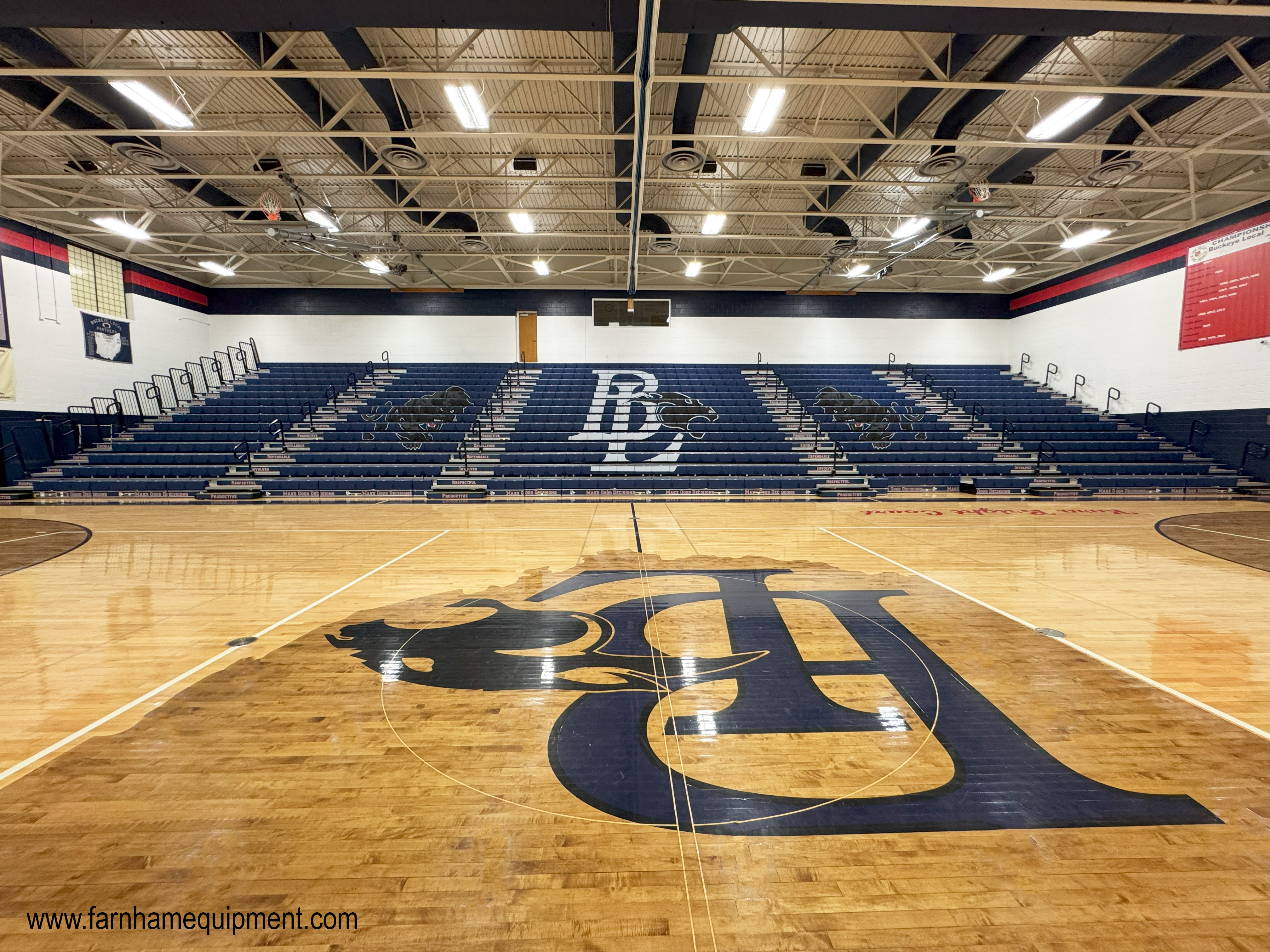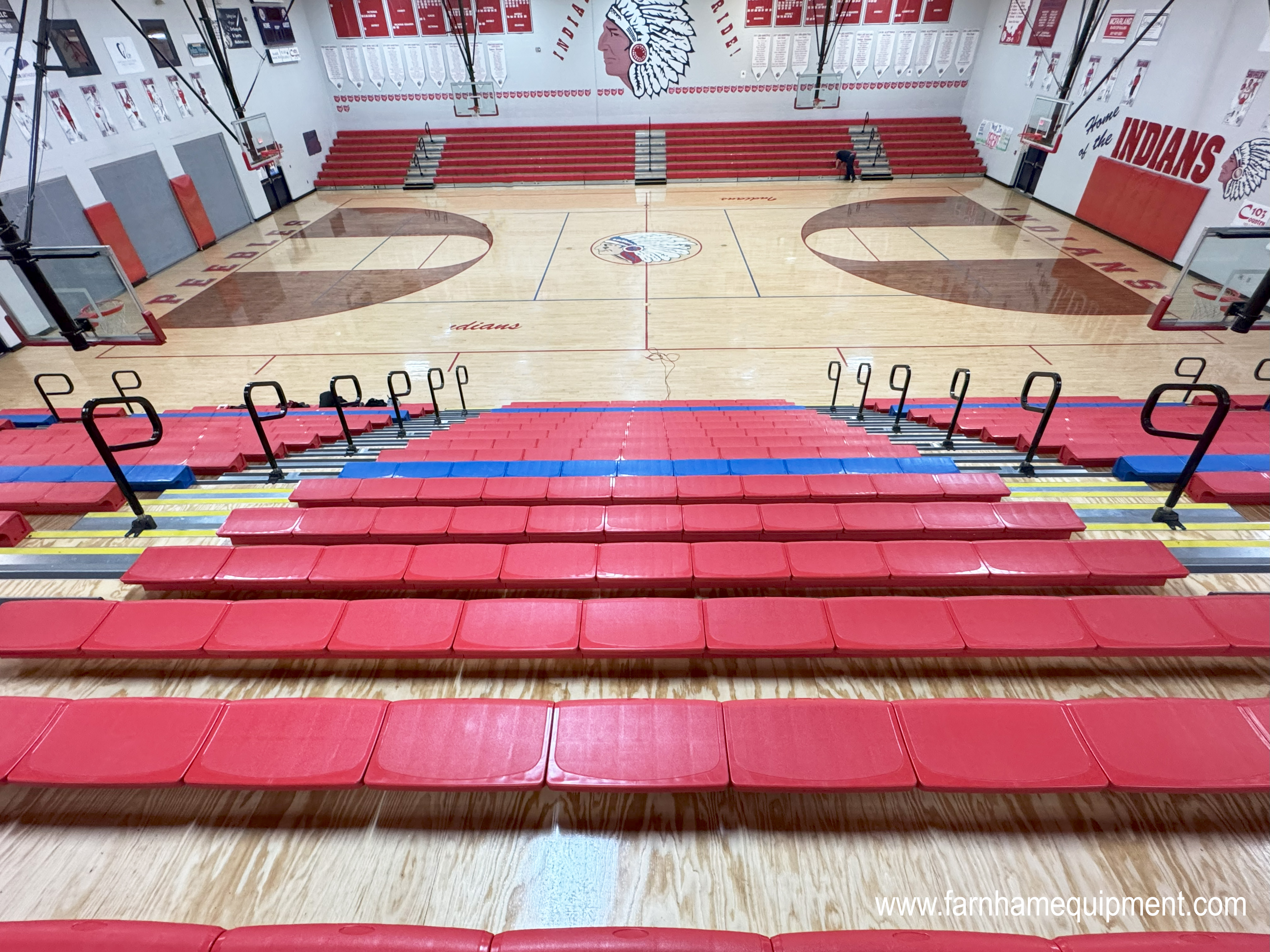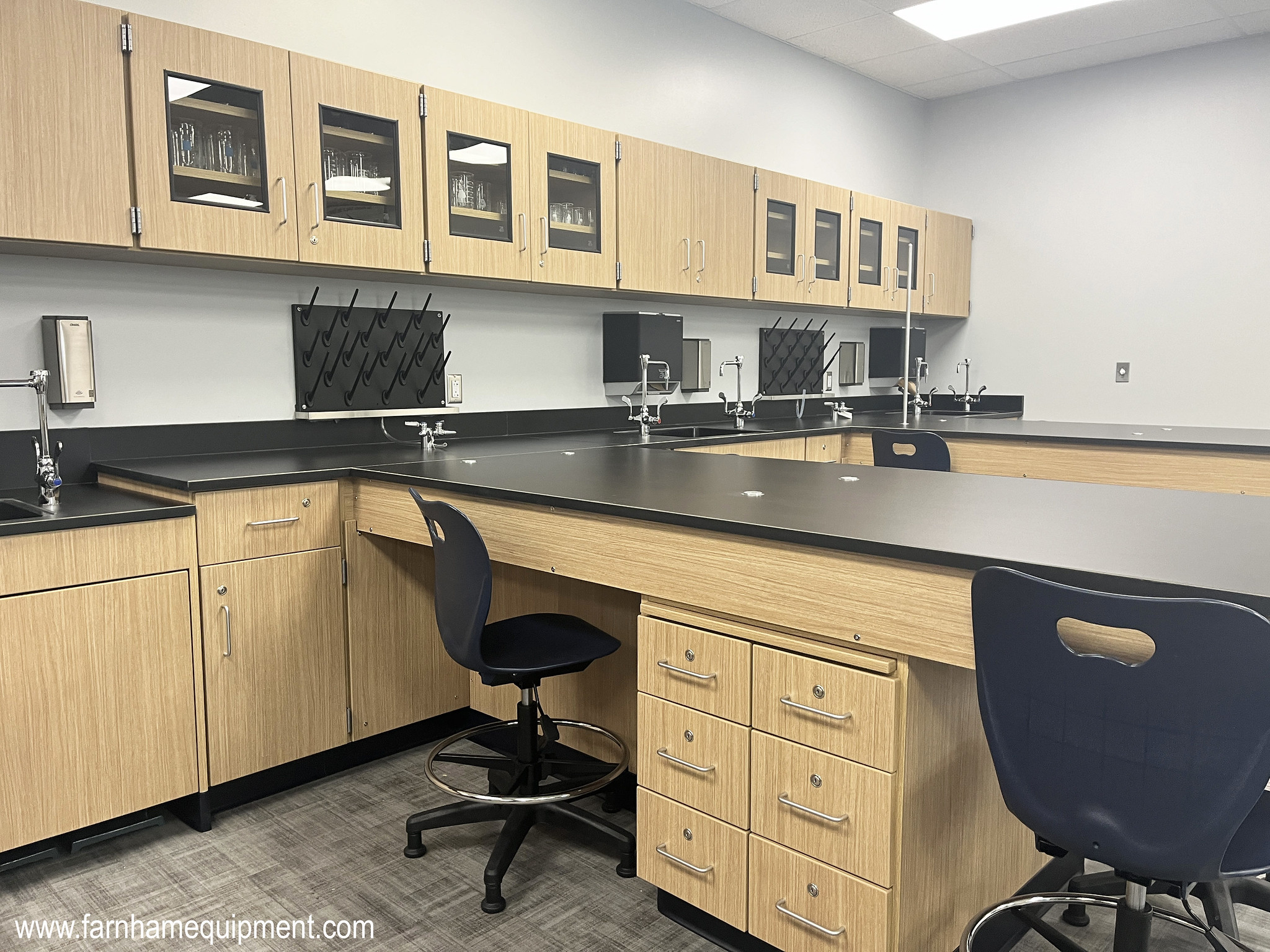Quick, show of hands – how many of you were at the original telescopic bleacher demonstration for the bleachers in your gymnasium?
In a group of 10, we’re lucky to have two hands raise up, sometimes one. This is by no fault of your own but it is our goal to make sure that you have all the information you need to safely operate your telescopic bleacher unit. This is one of many reasons we offer free Gym Safety Sessions, so we can not only review operation but we can also answer questions pertaining specifically to you and your equipment. While the below information isn’t as comprehensive as a Safety Session, we do want to point out some helpful tips.
Opening Your Bleachers:
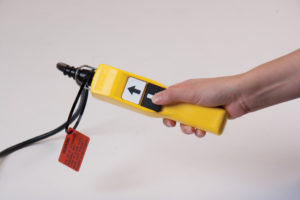
Get Your Pendant Control.
Seems a little obvious, right? But I say this because only Authorized Personnel should be operating your bleachers, this means that your Pendant Control should be stored in a safe place that only those authorized can gain access to it. Opening and closing the bleachers may seem like a simple task, and to a point, it is – but you want to make sure you know what to watch for and that you’re taking every safety and operational precaution into consideration.
Before operation, you want to be sure that the area is clear of people, debris, and dust (see cleaning under the bleachers). You’ll want to check under the bleachers as well as the area the bleachers are opening to.
Once you’re sure the area is clear and you’re plugged in ready to go, keep your eye on the bleacher unit to be sure it’s opening correctly and that all banks are opening together, not skewed across the gym floor. Make sure you bleacher opens completely before detaching the Pendant Control.
Take the Pendant Control with you once you’ve opened the unit fully. Even if you plan to close them again, the last thing we want to happen is that you go under the bleachers and someone closes them not realizing you’re there.
When you’re done, put the Pendant Control back in its stored location.
Additional Set Up:
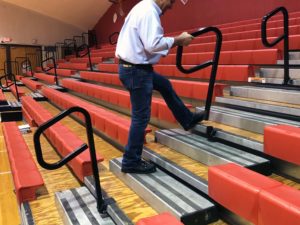
If you don’t have Auto-Rotating Aisle Rails (you should!), you’ll want to make sure every aisle rail is turned and properly secured for the safety of your patrons. A loose rail can be a major hazard for someone trying to catch their balance or worst case, some have pulled them out to use against another patron.
Floor to First Row Aisle Steps, if you don’t have them hinged (again, you should and we can do that for you!) you want to make sure to install each one properly before use. We’ve heard the debate several times, “but they’re a hazard!” Well, no. They’re not. The reality is, according to the International Building Code, if your bleachers were manufactured with removable first row aisle steps – code compliance dictates that you must use them.
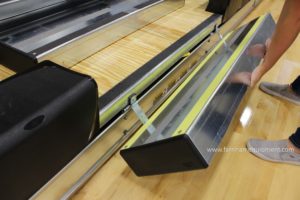 These steps are designed to maintain varying height levels of steps to reduce trip/fall hazards because they were happening frequently (without the steps in place). If you have varying step heights on your unit and someone isn’t paying attention when they are walking up or down the steps, it is likely they could miscalculate their step and trip or fall. This trip and fall hazard increases your liability risk!
These steps are designed to maintain varying height levels of steps to reduce trip/fall hazards because they were happening frequently (without the steps in place). If you have varying step heights on your unit and someone isn’t paying attention when they are walking up or down the steps, it is likely they could miscalculate their step and trip or fall. This trip and fall hazard increases your liability risk!
Flex Row Operation. If you have Hussey Seating Company Bleachers, be sure you know the proper way to open and close Flex Rows. Hussey has a great Flex Row video along with several tutorials here: Hussey Seating Company
If you have a Safety-End Closure Curtain (they’re great for school spirit AND more importantly restricting access to the understructure of your bleacher unit), you want to make sure it’s securely attached.
For many, this is all of the set up you need, for others you may have additional guard rails or accessories. Make sure they properly installed and all hardware is tight.
Closing Your Bleachers:
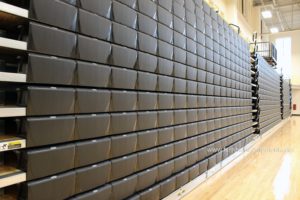 This is where you backtrack. Make sure your aisle steps are removed and stored. Most aisle rails can be left in the proper in-use position or you can turn them. If you’re turning them, again make sure all hardware is tightened. Get your Pendant Control from its stored location. Check under the bleachers for debris and dust that may impact properly closing your bleacher unit. It may seem impossible for things to fall through – but you’ll be surprised at what you might find. Check the surrounding area so that it is clear for closing. As you are closing the unit, be sure that, again, your eye is on the unit and that it is closing consistently.
This is where you backtrack. Make sure your aisle steps are removed and stored. Most aisle rails can be left in the proper in-use position or you can turn them. If you’re turning them, again make sure all hardware is tightened. Get your Pendant Control from its stored location. Check under the bleachers for debris and dust that may impact properly closing your bleacher unit. It may seem impossible for things to fall through – but you’ll be surprised at what you might find. Check the surrounding area so that it is clear for closing. As you are closing the unit, be sure that, again, your eye is on the unit and that it is closing consistently.
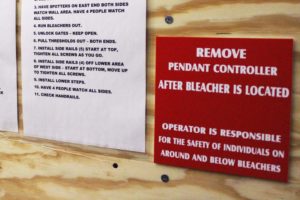 We’re noticing more and more districts and facilities are putting up reminders regarding operation of their bleacher units to keep safety at the forefront. By focusing on safety, you’ll also be focused on operation which will increase the longevity of your equipment.
We’re noticing more and more districts and facilities are putting up reminders regarding operation of their bleacher units to keep safety at the forefront. By focusing on safety, you’ll also be focused on operation which will increase the longevity of your equipment.
